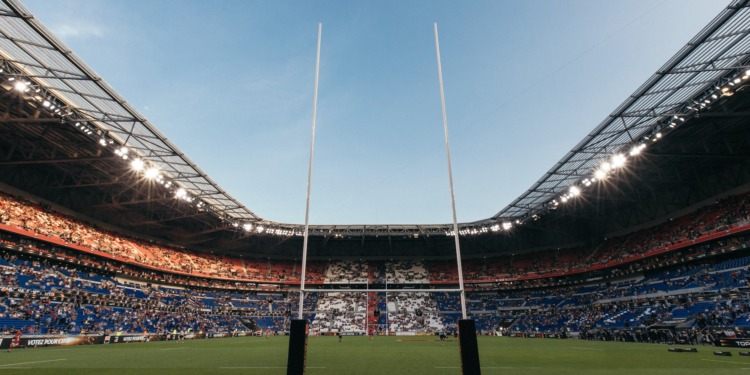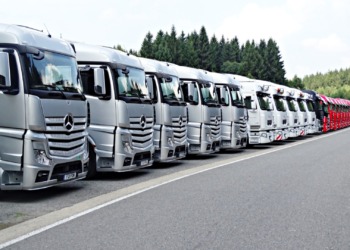The Rugby World Cup 2023 began on September 8th and is creating waves of excitement and anticipation worldwide. The host nation, France, is gearing up to welcome rugby enthusiasts from around the globe. It will also be a tournament of firsts, being the first World Cup to feature a shot clock. However, as the world’s attention turns to this prestigious sporting event, the backdrop of environmental sustainability has never been more important, especially given the disruption caused by the tournament’s previous iteration in Japan.
Climate Disruption
The last Rugby World Cup in 2019, held in Japan, was marred by Typhoon Hagibis, the worst storm the country faced in over 60 years. This not only led to unprecedented match cancellations but also led to the deaths of over 100 people. It served as an important reminder that climate disaster increasingly challenges sports events.
A Vision for Sustainability
World Rugby, the governing body behind the World Cup, has voiced its commitment to making this event not just about sports but also about leaving a positive social and environmental impact. Their dedication to sustainability dates to the host selection process in 2017. World Rugby acknowledges that it cannot single-handedly solve climate issues but is taking credible steps to pave the way for a sustainable future. These efforts have earned recognition from prestigious international organizations like the UN and the IOC.
The Sustainability Strategy
In 2022, World Rugby launched its inaugural sustainability strategy, aligning itself with the UNFCCC Sports for Climate Action Framework. The organization is determined to cut its emissions in half by 2030 and achieve net-zero emissions by 2040. A bold target has been set – to make major events, including the Rugby World Cup, climate-positive by 2030.
World Rugby laid out three primary areas of focus in its sustainability efforts. These are reducing carbon emissions and minimizing the tournament’s environmental impact, implementing sustainable resource management and waste reduction practices, and safeguarding and preserving the natural environment in which the game takes place.
Global Collaboration
World Rugby encourages all affiliated unions to join the Sports for Climate Action Framework by 2025. Additionally, high-performance rugby unions are urged to develop their sustainability plans and begin monitoring and reporting on their progress by 2030. However, the urgency of these actions must be addressed, particularly when considering the vulnerable Pacific Island nations.
RELATED ARTICLES: Green Football: EFL Clubs Leading the Way in Sustainability | A Decade of Sustainability at the US Open | FIFA Women’s World Cup 2023: A ‘Half-Time’ Report |
Protecting the Rugby Talent Factories
The Pacific Island nations of Tonga, Fiji, and Samoa may be small in population but play a significant role in global rugby. These nations have contributed a quarter of all rugby players, with 42 players of Pacific Island heritage representing other nations at the 2019 World Cup. Unfortunately, these islands face imminent threats from rising sea levels and increased high-tide flooding. World Rugby is taking steps to build climate resilience in these nations by assisting in infrastructure development and adaptation planning. They also aim to raise awareness among rugby players, unions, and fans about the climate crisis through a dedicated program during the World Cup.
Environmental Backlash
However, recent developments have overshadowed the Rugby World Cup’s environmental credibility. Greenpeace has exposed a significant issue by revealing the tournament’s endorsement by fossil fuel companies, notably Total Energies. A powerful video from Greenpeace portrays the dire consequences of fossil fuels, highlighting the risks of associating valuable sporting events with such companies.
Rugby doesn’t need fossil fuels, neither does our planet.
The only way to win the game for climate justice is to kick fossil fuels out of the field.
Are you on our team? 🌏
Watch and share the video.#EndFossilCrimes #RWC2023 #TotalPollution pic.twitter.com/5oxcUou2W1
— Greenpeace International (@Greenpeace) August 30, 2023
The SNCF Partnership
The partnership with SNCF is a standout initiative. It mandates that all team travel within a 5.5-hour distance by land by bus or train, ensuring that approximately 70% of team travel will be by train. This partnership allows fans to purchase train tickets well in advance, reducing last-minute travel expenses. Furthermore, SNCF commits to transporting team equipment using less polluting biogas.
These partnerships and initiatives have effectively reduced the tournament’s estimated carbon footprint. Pre-tournament estimates projected a total carbon footprint between 350,000 and 650,000 tons of CO2, a remarkable improvement compared to FIFA’s 2022 World Cup in Qatar. Travel, both fan and team, is expected to account for 80-85% of total emissions.
Mitigating Carbon Impact
Once the tournament concludes, a meticulous carbon footprint assessment will be conducted and reported to World Rugby and the French government. Any residual carbon emissions will be offset through certified carbon offsetting schemes. In a show of commitment, 1 million euros have been allocated for this purpose, with an additional contribution from the Metropolis of Lyon to mitigate the environmental impact of hosting.
World Rugby and tournament organizers are steadfast in their commitment to environmental sustainability. However, more can always be done to improve their efforts. Importantly, World Rugby executives stand united in supporting a climate-conscious approach, aiming to leave a positive environmental legacy and inspire global behavioral change through the power of sport.
Editor’s Note: The opinions expressed here by the authors are their own, not those of Impakter.com — Featured Photo Credit: Unsplash.










